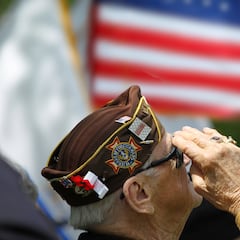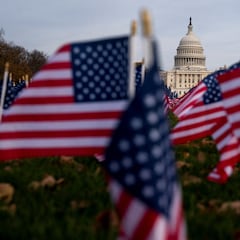Each year the United States sets aside one day to pay tribute to those who have fought its wars, dedicating a federal holiday.

What is Veterans Day and why do we celebrate it? Origin and meaning

Veterans Day is marked on Nov. 11 every year in the United States and acts as an opportunity to pay thanks to the servicemen and women who were involved in all wars in American history.
President Biden’s eldest son, Beau Biden, who passed away in 2015, served in Iraq, giving the first family an idea of how those with a member serving oversees impact them.
We have felt the pride that comes with seeing your child wear the uniform of the United States and the pain of long deployments far from home. We know what it is like to pray every day for the safe return of someone you love. And we have stood in awe of our veterans who carry the lasting wounds of war.
Joseph Biden, US President
The holiday is a national institution, but over the years the day has changed its name and even shifted date. So what are the origins of the sacred day, and why has it been altered in the past?
What is the history of Veterans Day?
The origin of Veterans Day is in the armistice agreement that finally brought World War I to an end. It was on the “eleventh hour of the eleventh day of the eleventh month” of 1918 that the horrific war ended and that date was initially named Armistice Day to commemorate that fact.
However, in 1954 the holiday’s name was changed by President Dwight D. Eisenhower to reflect the tragic fact that it would now be marking the service of Americans during two world wars. It was at this point that the 11 November was first christened Veterans Day.
Fourteen years later, in 1968, Congress passed the Uniform Monday Holiday Bill, which moved various federal holidays to Mondays to ensure that workers received a guaranteed number of long weekends every year. Under these new rules Veterans, Day was briefly moved to the fourth Monday of October, but in 1975 it was changed back to the original date.
Related stories

Is Veterans Day a national holiday?

Honoring our Armed Forces
President Gerald Ford argued that the historical importance of the date, Nov. 11, was of greater significance. Now the holiday is used to pay respect to those who served during any war for the United States.
According to a 2020 report from the US Census Bureau, veterans who served during the Vietnam War are now the largest group, totaling roughly 6.4 million. By 2023 there are fewer than 120,000 World War II veterans still alive in the United States.
Complete your personal details to comment